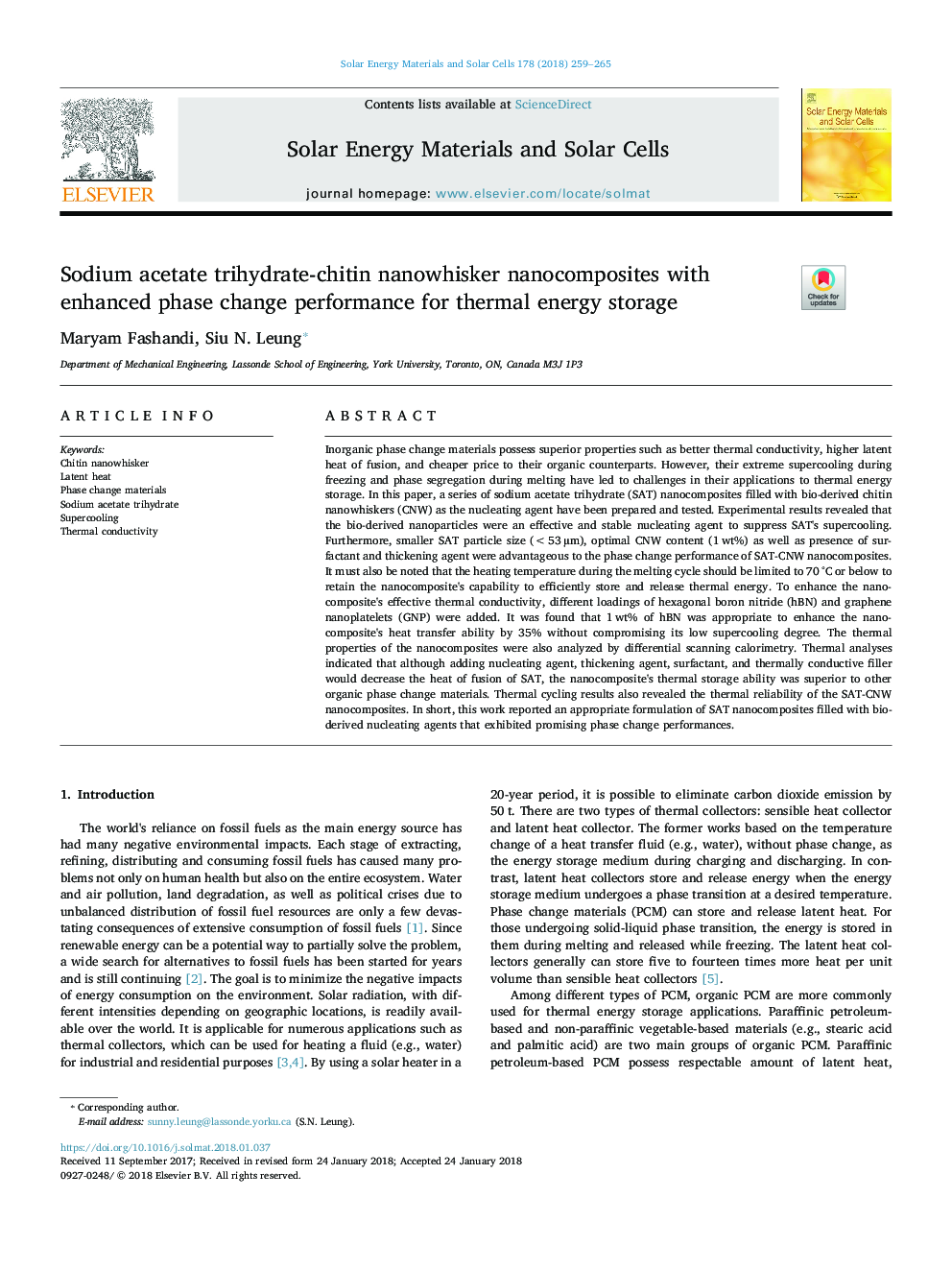| Article ID | Journal | Published Year | Pages | File Type |
|---|---|---|---|---|
| 6534377 | Solar Energy Materials and Solar Cells | 2018 | 7 Pages |
Abstract
Inorganic phase change materials possess superior properties such as better thermal conductivity, higher latent heat of fusion, and cheaper price to their organic counterparts. However, their extreme supercooling during freezing and phase segregation during melting have led to challenges in their applications to thermal energy storage. In this paper, a series of sodium acetate trihydrate (SAT) nanocomposites filled with bio-derived chitin nanowhiskers (CNW) as the nucleating agent have been prepared and tested. Experimental results revealed that the bio-derived nanoparticles were an effective and stable nucleating agent to suppress SAT's supercooling. Furthermore, smaller SAT particle size (< 53â¯Âµm), optimal CNW content (1â¯wt%) as well as presence of surfactant and thickening agent were advantageous to the phase change performance of SAT-CNW nanocomposites. It must also be noted that the heating temperature during the melting cycle should be limited to 70â¯Â°C or below to retain the nanocomposite's capability to efficiently store and release thermal energy. To enhance the nanocomposite's effective thermal conductivity, different loadings of hexagonal boron nitride (hBN) and graphene nanoplatelets (GNP) were added. It was found that 1â¯wt% of hBN was appropriate to enhance the nanocomposite's heat transfer ability by 35% without compromising its low supercooling degree. The thermal properties of the nanocomposites were also analyzed by differential scanning calorimetry. Thermal analyses indicated that although adding nucleating agent, thickening agent, surfactant, and thermally conductive filler would decrease the heat of fusion of SAT, the nanocomposite's thermal storage ability was superior to other organic phase change materials. Thermal cycling results also revealed the thermal reliability of the SAT-CNW nanocomposites. In short, this work reported an appropriate formulation of SAT nanocomposites filled with bio-derived nucleating agents that exhibited promising phase change performances.
Related Topics
Physical Sciences and Engineering
Chemical Engineering
Catalysis
Authors
Maryam Fashandi, Siu N. Leung,
